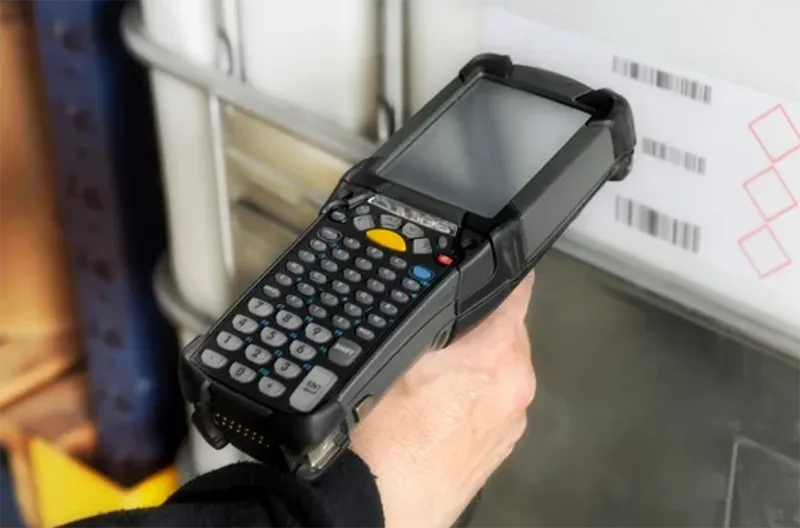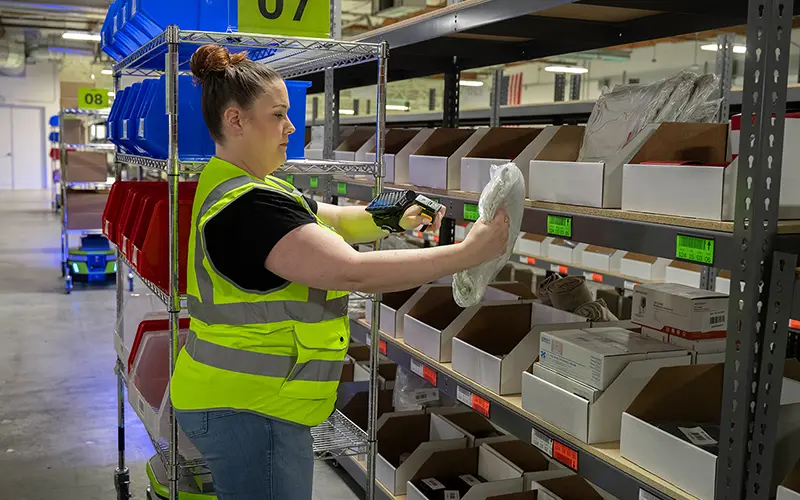
Device lifecycle management is more important than ever. That’s because manufacturing floors and distribution centers are more reliant on devices to keep up ever-growing supply chain demand. From computers and smartphones to servers, RFID readers, and barcode scanners, the array of devices used in modern workplaces is vast and diverse.
However, managing these devices throughout their lifecycle poses significant challenges for organizations, ranging from procurement and deployment to maintenance and disposal. This is where device lifecycle management comes into play.
What is Device Lifecycle Management?
Device lifecycle management (DLM) is a comprehensive approach to managing all aspects of a device’s existence within an organization, from its initial acquisition through to its eventual retirement and disposal. It involves a series of coordinated processes and activities aimed at optimizing the performance, security, and longevity of devices throughout their lifecycle. This includes planning and procurement, deployment and configuration, ongoing maintenance and monitoring, security management, upgrade and replacement, and end-of-life management.
By implementing DLM practices, organizations can ensure that their technology infrastructure remains efficient, secure, and aligned with business objectives, ultimately maximizing return on investment while minimizing risks and disruptions.
Device lifecycle management encompasses the systematic approach to managing devices, from their initial acquisition to their eventual retirement. It involves a series of coordinated processes and activities aimed at optimizing the performance, security, and longevity of devices within an organization’s IT infrastructure.
Key Stages of Device Lifecycle Management
Effectively managing devices throughout their lifecycle is essential for maintaining security, performance, and cost efficiency. From the moment a device is considered for purchase to the time it’s retired, each stage requires careful planning and execution.
Below is a breakdown of the key phases in the device lifecycle and what organizations need to do at each step to ensure smooth operations and long-term value.

Planning and Procurement
The journey begins with thorough planning and procurement processes. Organizations must assess their technological needs, budgetary constraints, and user requirements to make informed decisions about the types and quantities of devices to acquire. This stage involves researching vendors, negotiating contracts, and selecting devices that align with the organization’s objectives.
Deployment and Configuration
Once devices are acquired, they need to be deployed and configured according to the organization’s specifications. This includes installing necessary software, setting up security protocols, and customizing settings to meet user needs. Proper deployment ensures that devices are ready for use and integrated seamlessly into the existing infrastructure.
Maintenance and Monitoring
Throughout the operational life of devices, ongoing maintenance and monitoring are essential to ensure optimal performance and security. This includes installing software updates, conducting regular diagnostics, and addressing any hardware or software issues promptly. By proactively managing devices, organizations can minimize downtime and increase productivity. Such an implementation saves 30 to 50 percent over scheduled repairs, according to Siemens.
Upgrade and Replacement
As technology evolves, devices may become obsolete or no longer meet the organization’s needs. At this stage, organizations may opt to upgrade existing devices with newer hardware or replace them entirely with more advanced models. This ensures that the technology infrastructure remains current and capable of supporting business operations effectively.
End-of-Life Management
When devices reach the end of their useful life, proper end-of-life management is crucial to ensure data security and environmental sustainability. This involves securely wiping data from devices, decommissioning them from the network, and following proper disposal or recycling procedures. Failure to manage end-of-life devices appropriately can result in data breaches and environmental harm.
Why Device Lifecycle Management Matters
In fast-paced manufacturing and warehouse environments, operational efficiency and uptime are everything. Devices like handheld scanners, mobile computers, label printers, and rugged tablets are critical to daily workflows — and if even a single device goes offline unexpectedly, it can ripple through the supply chain.
That’s where effective Device Lifecycle Management (DLM) comes in. By systematically managing the planning, procurement, deployment, maintenance, and retirement of these devices, businesses can reduce downtime, improve asset visibility, and avoid costly disruptions.
For manufacturers and warehouses, DLM isn’t just IT housekeeping — it’s a strategic necessity. From preventing device failures during peak production periods to ensuring compatibility with critical warehouse management systems (WMS), a proactive DLM strategy can boost productivity and control costs.
It also helps standardize device usage across locations, simplifying support and minimizing training overhead.
Benefits of Device Lifecycle Management
Implementing an effective Device Lifecycle Management (DLM) strategy is about much more than just keeping track of hardware. It’s a proactive approach to ensuring that every device — from mobile scanners to rugged tablets — operates at peak performance throughout its useful life. By managing the entire lifecycle, from acquisition to retirement, organizations can eliminate costly inefficiencies and reduce the risk of disruption.
Effective device lifecycle management offers several benefits to organizations:
- Reduced downtime through predictive maintenance and timely replacements
- Lower total cost of ownership (TCO) by extending device lifespans
- Improved security via consistent updates and device tracking
- Better inventory accuracy with properly functioning scanning and tracking tools
- Scalable operations as businesses grow or shift infrastructure

Challenges of Creating a DLM Strategy
While the benefits of Device Lifecycle Management are clear, implementing an effective strategy is not without its hurdles. One of the biggest challenges is simply gaining visibility into the current state of devices across the organization — especially in large or multi-site operations where equipment is constantly in use and often spread out. Without centralized tracking and reporting, it becomes difficult to know what devices are active, outdated, in repair, or underperforming.
Standardization is another common obstacle. Many organizations struggle with a mix of device types, models, and configurations, which complicates maintenance, support, and software updates. Additionally, budgeting for the full lifecycle — including hidden costs like end-of-life decommissioning or out-of-warranty failures — often requires coordination between IT, operations, and finance departments, which don’t always share the same priorities.
Security and compliance also add layers of complexity. Ensuring devices are regularly updated, properly configured, and not vulnerable to data breaches requires constant vigilance. And finally, aligning a DLM plan with evolving business needs — such as scaling operations or transitioning to new technologies — demands a flexible yet well-structured approach.
How to Roll Out a DLM System
Launching a successful Device Lifecycle Management (DLM) system starts with setting clear objectives. Manufacturers and warehousing companies should begin by auditing their current device inventory: What’s in use? What’s outdated? What devices are critical to operations? This baseline assessment helps identify gaps, inefficiencies, and opportunities for improvement.
Next comes standardization — choosing a set of devices and software platforms that can scale across the operation. This simplifies maintenance, training, and support while paving the way for centralized management. It’s also important to develop policies and procedures for each phase of the lifecycle: procurement, deployment, maintenance, and end-of-life. Assigning clear ownership — whether it’s IT, operations, or a hybrid team — ensures accountability at each stage.
[eBOOK]
2025 RFID Integration Guide
A complete guide that will help retail brand owners, manufacturers, and distributors reap great benefits from integrating RFID into their supply chain.
Using RFID for DLM
To track devices accurately and in real-time, many organizations are turning to RFID technology. By tagging handhelds, scanners, printers, and even charging stations, companies gain instant visibility into where assets are, how they’re used, and when they need service or replacement. While not the only option, RFID is particularly well-suited for high-volume, high-mobility environments like warehouses and production floors.
Finally, rolling out a DLM system isn’t a one-time project — it’s an ongoing process. Regular reviews, software updates, and data analysis help fine-tune the system and keep it aligned with changing business needs. With the right approach, manufacturers and warehouses can turn device management from a headache into a strategic advantage.
Interested in RFID?
An RFID tracking system can help organizations of all sizes improve their supply chain efficiency. Contact the CYBRA team to schedule a demo today.




